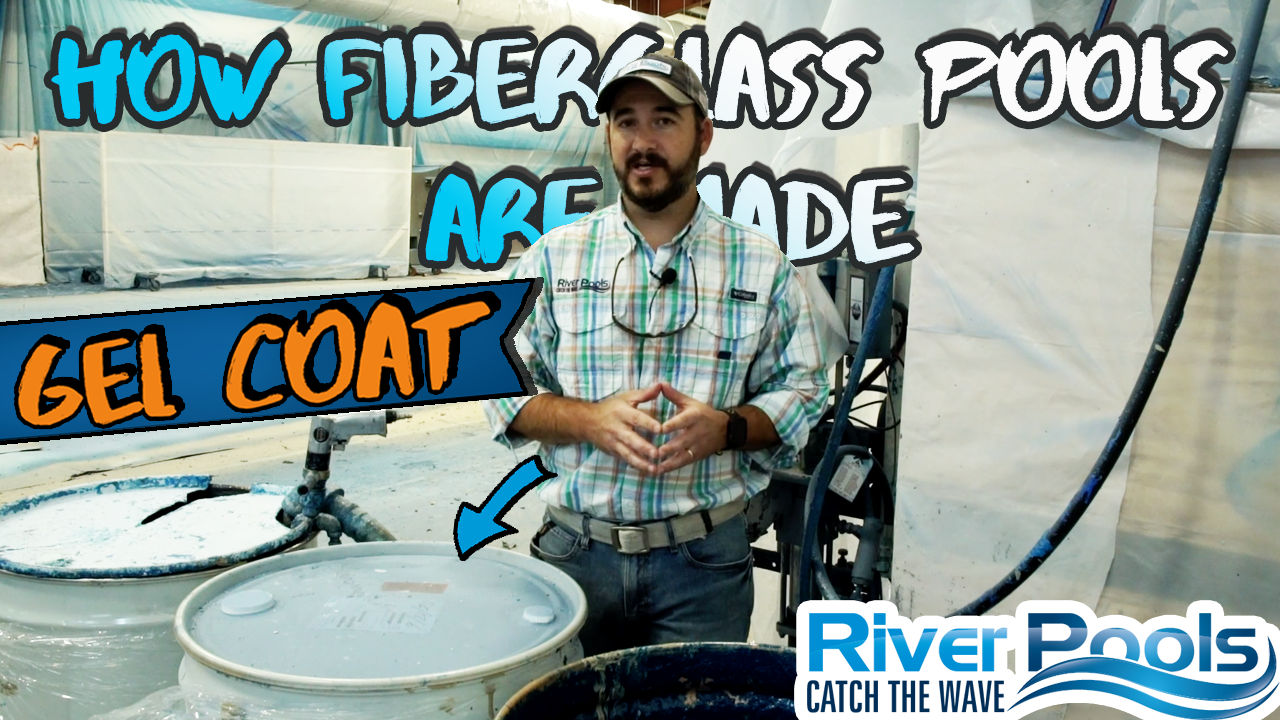Gel Coat Surface Layer


The entire surface of the pool that we see and touch is a thin layer of gelcoat. Because fiberglass pools are actually built from the inside out, gelcoat is the first layer applied during the manufacturing process.
Our gelcoat is spray-applied to a thickness of 27 to 30 mils and provides the rich color and smooth finish that make fiberglass pools beautiful and user-friendly.
You have probably heard that fiberglass pools are easier to maintain than traditional pools. This is because the gelcoat surface is relatively nonporous. This makes the pool algae-resistant and eliminates the need for burdensome maintenance like brushing the entire pool each week or costly acid washing every 3-5 years to kill embedded algae.
It’s important to us that our gelcoat achieves a proper cure, as this will ensure its durability.
If you read enough online forums about fiberglass pool gelcoat, you’ll find some people, especially with older white pools, had problems with their pool surfaces eroding away. The surface would “chalk” and turn to white powder before their eyes. The surface of these pools was deteriorating.
In some cases, this was most assuredly due to homeowner neglect, but in many cases, the gelcoat never achieved a full cure.
This deterioration could be for a number of reasons such as:
- Improper factory conditions
- The gelcoat was under-catalyzed
- The gelcoat was not backed by another layer of laminate to drive the cure
With as many polymer chains cross-linked as possible, the product reaches a full cure with maximum strength and durability. One key to making this happen is temperature, because heat drives the cross-linking process.
Here's how we drive the cross-linking process of our gelcoat:
Check Mold Temperature with a Temperature Gun to Ensure at Least 77 Degrees Fahrenheit
Fiberglass pools are manufactured on a mold—a huge fiberglass structure that is a mirror image of the pool. We heat the entire mold to a minimum temperature of 77°F before spraying the gelcoat. This is because once the gelcoat is sprayed, it will immediately become the same temperature as the mold.
77°F is the ideal temperature for composites manufacturing, so by ensuring the mold is 77°F, we are helping the gelcoat to achieve a full cure.
Heat Gelcoat Material to At Least 77 Degrees
When it comes to composites, consistency is our friend. Our drum of gelcoat material is well blended and the right temperature before it is sprayed, so that it can reach its highest performance potential.
Maintain Consistent Air Temperature and Humidity Levels
Air temperature is another variable that can greatly affect the cure of our pools.
Our factory is climate-controlled with state-of-the-art infrared heat that delivers heat to the plant while allowing our ventilation system to function properly.
This is a huge advantage over concrete or vinyl liner pools, which are constructed on site and subject to the volatilities of weather.
Use Specially Blended Catalyst at the Correct Percentage
The gelcoat and all other resins within the composite are blended with a catalyst—a liquid that, when added, initiates the process of polymerization. We use special blends of catalyst for the summer and winter, and ensure that the correct percentage of catalyst is mixed with the gelcoat during the spraying process.
Too much catalyst, and the gel sets too rapidly, preventing proper spray pattern overlap. Too little catalyst, and the cure of the gelcoat is compromised.
Ready to Request a Quote?
River Pools® manufactures fiberglass pool shells and does not install pools. Pools are installed by locally owned and operated dealers and franchisees. The relationship between the dealers and franchisees to River Pools® is that of an independent contractor. River Pools Franchising LLC (Franchising) provides independently owned and operated River Pool franchisees with the right to market the River Pools brand of pool shells as a franchisee. Franchising does not manufacture pool shells. Due to the unprecedented and historic growth of the River Pools brand, this website contains an abundance of information that has been created over the last decade. Some of the content on this site may reflect prices, perspectives, processes, entities, and names that were relevant at the time but may not be as relevant today.
Consumers should consult their local installer (independent dealer or franchisee) for the most accurate and updated information based on the unique conditions of their property. Consumers should verify specifications with the installing dealer rather than relying on the information on this website, which is not intended to be a final specification.
